Army's airborne engineers build French connection
An exercise has seen British airborne engineers build a bridge over a large man-made lake and train with their French counterparts.
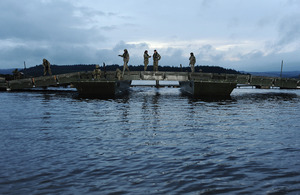
The sappers of 23 Engineer Regiment (Air Assault) built a bridge over Kielder Water [Picture: Corporal Obi Igbo, Crown Copyright/MOD 2012]
23 Engineer Regiment (Air Assault) has been working in the harsh climate and unforgiving landscape of Northumbria with French troops from 17e Regiment du Genie Parachutiste (17e RGP).
Exercise Eagle Sapper tested troops in a humanitarian relief operation in a country facing famine and struggling to recover from damage caused by a tsunami, with government control undermined by insurgents.
After deploying from their base at Woodbridge in Suffolk, the exercise started in earnest with the use of Air Portable Ferry Bridge (APFB) equipment to move vehicles and personnel across the two-mile-wide (3.2km) expanse of Kielder Water.
APFB specialist equipment is designed to be parachuted or moved by helicopter and set up either as a conventional bridge or a self-propelled ferry to cross wider obstacles.
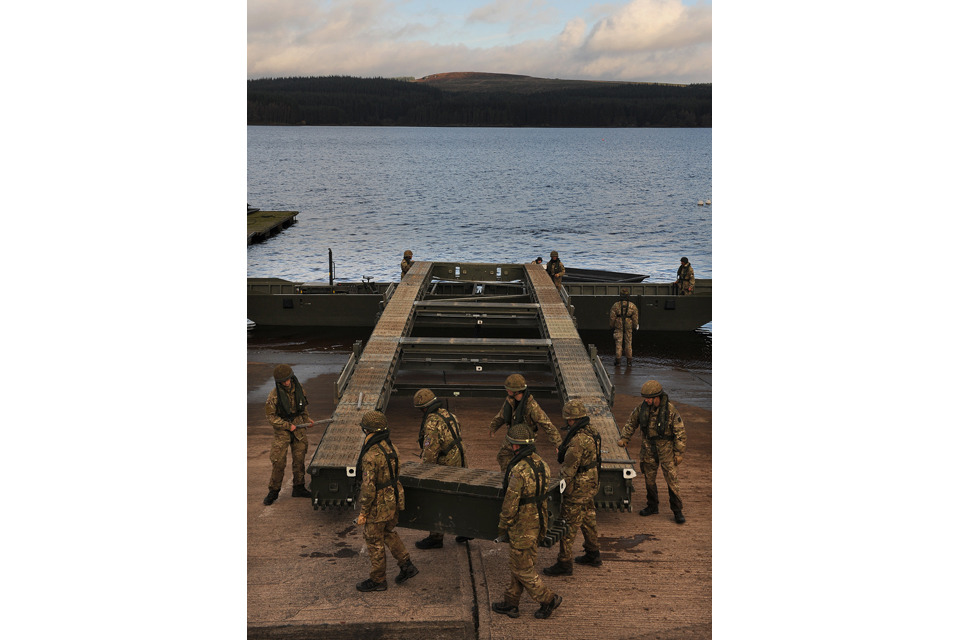
Sappers preparing the bridge to go over Kielder Water during Exercise Eagle Sapper [Picture: Corporal Obi Igbo, Crown Copyright/MOD 2012]
The sappers then moved to Otterburn, where they were challenged to build water supply points capable of providing 40,000 litres of drinking water every day, cross rivers using bridging equipment and improvised materials, demolish obstacles, and construct defensive positions which were then attacked by enemy forces.
The training was intended to test the unit in their role providing combat engineering support to 16 Air Assault Brigade, which is ready to deploy anywhere in the world at short notice for operations ranging from disaster relief to war-fighting.
Lieutenant Colonel Jason Hones, Commanding Officer of 23 Engineer Regiment (Air Assault), said:
Exercise Eagle Sapper has seen our soldiers working for up to 22-hours-a-day on demanding tasks that test both their combat engineering and infantry skills in very harsh terrain and weather conditions.
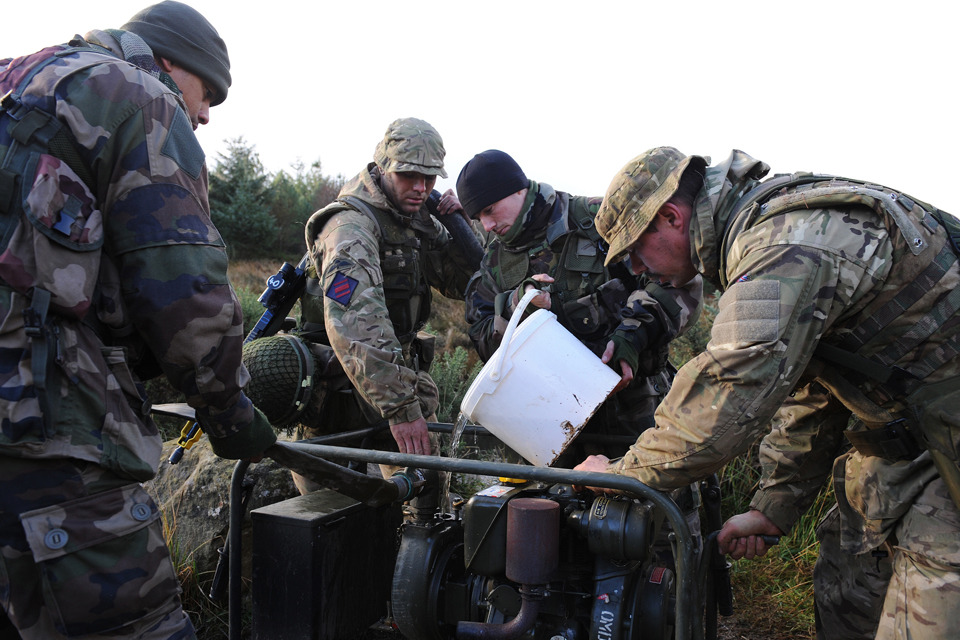
The sappers and their French counterparts built a water supply point capable of providing 40,000 litres of drinking water every day during Exercise Eagle Sapper on Otterburn Ranges [Picture: Corporal Obi Igbo, Crown Copyright/MOD 2012]
It is important that we test the mettle of the soldier we are going to send on operations in arduous and unknown conditions so that we know he can cope with anything that is thrown at him. If a soldier can survive in Northumbria in winter he can survive anywhere in the world.
The French troops joined the exercise as part of the developing partnership between 16 Air Assault Brigade and 11e Brigade Parachutiste (11e BP), which have been tasked to develop a Combined Joint Expeditionary Force for contingency operations.
Lt Col Hones said:
We’re really lucky to have soldiers from our French partner regiment with us, having recently sent troops over to train in France.
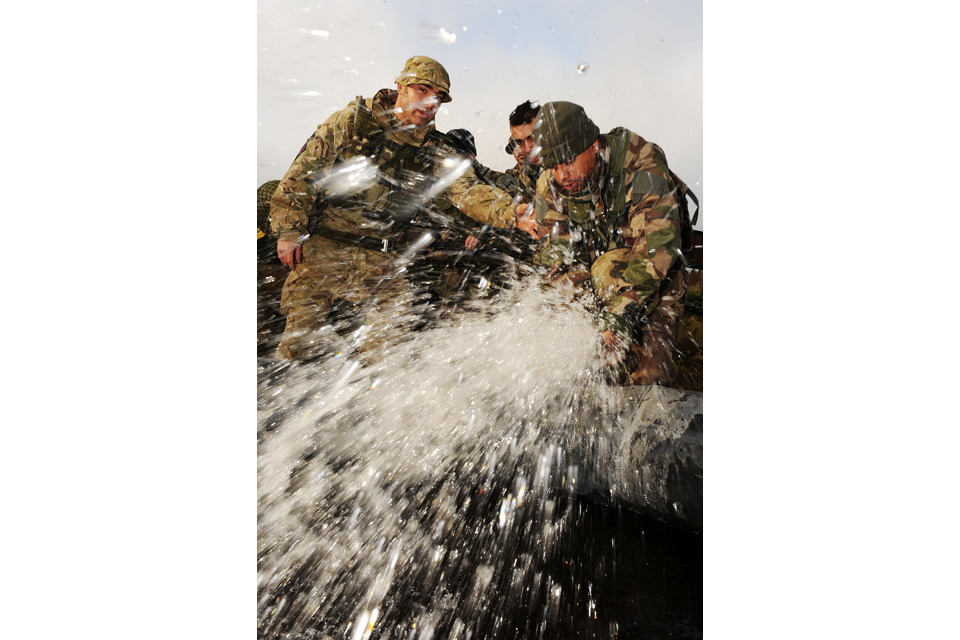
A water supply point constructed during Exercise Eagle Sapper on Otterburn Ranges [Picture: Crown Copyright/MOD 2012]
Working together on this exercise is developing our integration at the section level, to learn how we each operate and our particular strengths and weaknesses.
We will take this to the next level up in the coming months, working towards the aim of being able to work seamlessly together.
Lieutenant Matthieu Le Puloc’h commanded the ten-strong 17e RGP contingent, who lived and worked with their British counterparts throughout the two-week exercise.
He said:
This is our first joint training and our presence is about learning how 23 Engineer Regiment works so that, if we do go on operations together, we know what to expect.
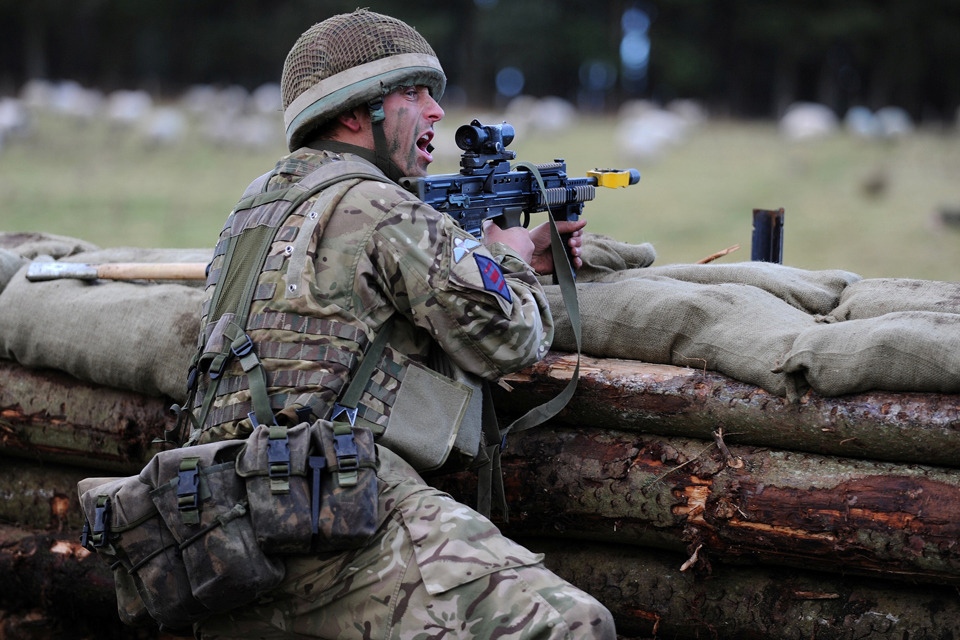
A sapper from 23 Engineer Regiment (Air Assault) defending his position during Exercise Eagle Sapper on Otterburn Ranges [Picture: Crown Copyright/MOD 2012]
There are a lot of similarities in our basic role as airborne engineers, but our equipment and working practices are different.
Otterburn is a cold and hard environment but we have quickly adapted to it and the exercise has been a great experience to broaden the minds of our soldiers.
Corporal Steve McCann said:
It’s been a tough exercise in difficult conditions that has been made more challenging by working with our French counterparts. Their kit is slightly different and the language barrier makes everything go a little bit slower, but we’re showing them how we work and it’s rewarding to complete engineering tasks together.